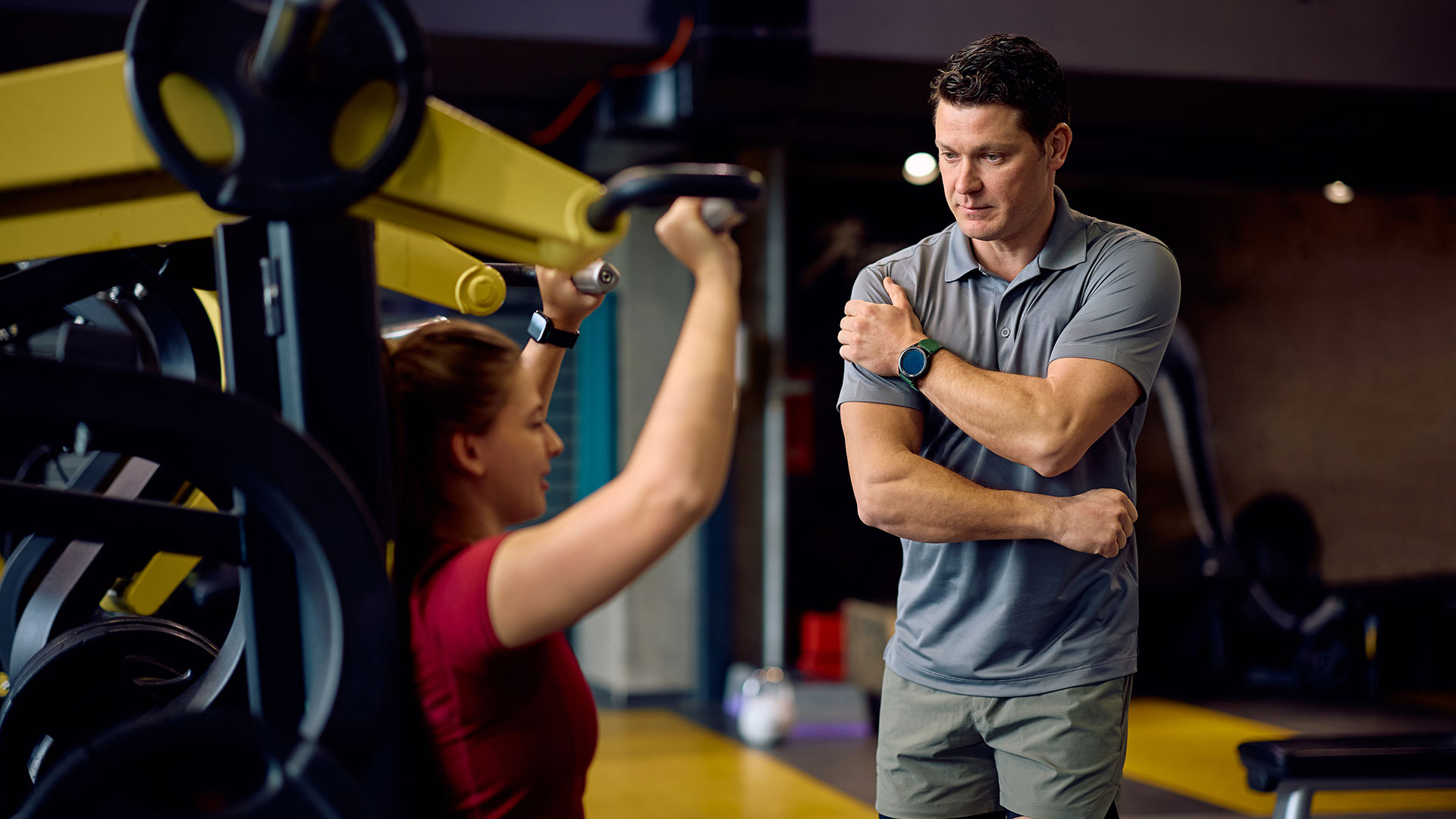When most people step on the scale, they expect the number to reveal how healthy or fit they are. But that single number doesn’t tell the whole story. Two people can weigh the same yet look and perform very differently depending on what makes up their weight. This is where the concept of body composition comes in.
Unlike weight alone, body composition breaks down the body into fat mass, muscle mass, bone, water, and other tissues. Understanding this distinction is crucial, especially for beginners starting their fitness journey. It helps you set realistic goals, avoid common misconceptions, and track progress more effectively. In this article, we’ll explore the difference between BMI vs body fat percentage, introduce practical fitness measurement tools, and explain what healthy body fat levels look like for men and women.
What Is Body Composition?
Body composition refers to the proportion of fat mass to lean mass in your body. Lean mass includes muscles, bones, organs, and fluids basically everything that isn’t body fat. Instead of only focusing on “losing weight,” beginners should understand that the quality of weight matters more than the quantity.
For example, imagine two people who both weigh 70 kilograms. One might have a high percentage of muscle and a lower percentage of fat, while the other carries more body fat and less muscle. Even though the scale shows the same weight, their health, strength, and appearance will be very different.
Why does this matter? Research shows that individuals with healthier body composition, meaning more lean mass and less excess fat, tend to have lower risks of heart disease, diabetes, and metabolic disorders. For gym beginners, learning how to monitor changes in body composition is a smarter way to evaluate progress than relying on the scale alone.
BMI (Body Mass Index): The Traditional Measure
The Body Mass Index (BMI) is one of the most common ways doctors and health organizations assess weight categories. It’s a simple calculation that divides your weight (in kilograms) by your height (in meters squared). Based on this number, adults are placed into categories such as underweight, normal, overweight, or obese.
Why BMI is useful:
-
It’s quick and easy to calculate.
-
It provides a general population-level picture of health risks.
-
Studies show a correlation between very high BMI and increased risk of chronic diseases like cardiovascular problems.
Where BMI falls short:
-
It doesn’t differentiate between muscle and fat.
-
A muscular beginner in the gym could be labeled “overweight” even if they have low body fat.
-
It doesn’t consider fat distribution belly fat, for example, is more dangerous than fat stored elsewhere.
In short, BMI is a starting point, but it doesn’t give the full picture of fitness. This is why more precise tools, such as body fat percentage measurements, are becoming increasingly important in gyms and health assessments.
Body Fat Percentage: A More Precise Indicator
While BMI provides only a rough estimate of weight categories, body fat percentage gives a much clearer picture of your health and fitness. It measures the proportion of your total body weight that comes specifically from fat. For example, if you weigh 70 kilograms and 14 kilograms of that is fat, your body fat percentage is 20%.
Why Body Fat Percentage Matters
-
Accuracy: Unlike BMI, it distinguishes between lean mass (muscle, bone, organs) and fat mass.
-
Health insight: Excess body fat, particularly around the abdomen, has been linked in research to higher risks of cardiovascular disease, type 2 diabetes, and certain cancers.
-
Performance: Athletes and regular gym-goers use body fat percentage to track improvements in muscle growth and fat loss over time.
Types of Body Fat
-
Essential fat: The minimal amount of fat necessary for normal body function. This includes fat stored in bone marrow, organs, and the nervous system. For men, this is around 2–5%, and for women, 10–13% (due to hormonal and reproductive needs).
-
Storage fat: The fat stored in adipose tissue under the skin and around organs. This is the fat we aim to manage through diet and exercise.
Healthy Body Fat Levels
Research from the American Council on Exercise (ACE) and other organizations suggests the following healthy ranges:
| Category | Women (%) | Men (%) |
| Essential Fat | 10–13 | 2–5 |
| Athletes | 14–20 | 6–13 |
| Fitness | 21–24 | 14–17 |
| Average | 25–31 | 18–24 |
| Obese | 32+ | 25+ |
For those new to the gym, tracking body fat percentage is more insightful than obsessing over the scale or BMI. Small improvements such as dropping from 28% to 25% can indicate meaningful progress, even if your weight doesn’t change much. Building muscle while reducing fat is often the healthiest and most sustainable path forward.
Fitness Measurement Tools for Beginners
If you want to track your body composition accurately, the good news is that there are several tools available from simple devices you can find in most gyms to advanced methods used in research labs. Each tool has its strengths and limitations, and as a beginner, the key is to choose a method that’s practical, reliable, and easy to repeat over time.
1. Skinfold Calipers
-
How it works: A trainer pinches specific sites on the body (like the triceps, abdomen, and thigh) and measures the thickness of the skinfold. These measurements are used in formulas to estimate body fat percentage.
-
Pros: Inexpensive, widely available, relatively quick.
-
Cons: Accuracy depends heavily on the skill of the person using the calipers. Beginners may get inconsistent results if not tested by a trained professional.
2. Bioelectrical Impedance Analysis (BIA)
-
How it works: Often found in smart scales, this method sends a very low electrical current through the body. Because fat, muscle, and water conduct electricity differently, the device estimates body composition.
-
Pros: Easy to use at home or in gyms; provides quick results.
-
Cons: Accuracy can vary depending on hydration levels, recent meals, and the quality of the device. Best used consistently under the same conditions (e.g., morning, before eating).
3. Dual-Energy X-ray Absorptiometry (DEXA)
-
How it works: A low-dose X-ray scan measures bone density, lean mass, and fat mass with high accuracy.
-
Pros: Considered the gold standard for body composition measurement; also gives regional data (e.g., belly fat vs leg fat).
-
Cons: Expensive, requires access to medical or research facilities, not practical for frequent use by beginners.
4. Hydrostatic Weighing (Underwater Weighing)
-
How it works: You are weighed on land and then underwater. Because fat floats and muscle sinks, the difference helps estimate body composition.
-
Pros: Very accurate when done properly.
-
Cons: Hard to access, time-consuming, and can be uncomfortable. Rarely used outside of research or specialized labs.
Which Tools Are Best for Beginners?
For most newcomers to the gym, BIA smart scales and skinfold calipers (with the help of a trainer) are the most practical choices. They may not be as precise as DEXA, but they are affordable, repeatable, and good enough to track trends over time. Remember: consistency in measurement matters more than absolute accuracy.
By choosing the right fitness measurement tool, you can move beyond the bathroom scale and start monitoring the real changes happening inside your body as you build strength and improve health.
Comparing BMI vs Body Fat Percentage
Many beginners wonder: Should I track my BMI or my body fat percentage? The truth is that both measurements can be useful, but they tell very different stories.
BMI in Practice
-
What it tells you: A quick estimate of whether your weight is “under,” “normal,” “over,” or “obese” for your height.
-
Where it’s useful: Large-scale health screenings and identifying potential population-level health risks.
-
Where it fails: For individuals, especially those who exercise, BMI doesn’t reveal how much of your weight comes from muscle vs fat.
Example: A beginner who starts weight training may gain muscle while losing fat. Their BMI could stay the same or even rise but their body is getting healthier and stronger.
Body Fat Percentage in Practice
-
What it tells you: The actual proportion of your body made up of fat.
-
Where it’s useful: Tracking progress in the gym, assessing true health risks, and setting realistic fitness goals.
-
Where it fails: Measurement methods can vary in accuracy depending on the tool and conditions (hydration, timing, skill of tester).
The Key Difference
-
BMI looks at weight for height, without detail.
-
Body fat percentage looks inside the body to see what that weight is made of.
For beginners in the gym, focusing on body fat percentage is usually more motivating and more accurate for tracking real changes. BMI can still serve as a general reference, but it should never be the only measurement of progress.
What Are Healthy Body Fat Levels?
So how much body fat is healthy? Research shows that the answer depends on sex, age, and activity level. Having too little fat is dangerous, but carrying too much increases the risk of chronic diseases. The goal is to find a range that supports good health, energy, and performance.
Recommended Body Fat Ranges
According to the American Council on Exercise (ACE) and other scientific sources, here are the typical healthy ranges:
| Category | Women (%) | Men (%) |
| Essential Fat | 10–13 | 2–5 |
| Athletes | 14–20 | 6–13 |
| Fitness | 21–24 | 14–17 |
| Average | 25–31 | 18–24 |
| Obese | 32+ | 25+ |
-
Women naturally require more essential fat due to hormonal and reproductive functions.
-
Athletes often fall into the lower ranges because of higher lean mass and lower fat storage.
-
The “fitness” and “average” ranges are the most realistic and sustainable targets for beginners.
Risks of Going Too Low or Too High
-
Too little fat: Can lead to hormonal imbalances, fatigue, weakened immunity, and in women, menstrual irregularities.
-
Too much fat: Associated with increased risk of heart disease, type 2 diabetes, joint problems, and lower physical performance.
For most beginners, aiming for the fitness to average range is a practical and healthy target. Progress should be steady, not extreme reducing body fat gradually while building lean mass gives the best long-term results.
Applying Body Composition Knowledge in the Gym
Once you understand the difference between BMI and body fat percentage, the next step is putting that knowledge into action. For beginners, this means shifting the focus from just “losing weight” to improving body composition reducing excess fat while building lean muscle mass.
How to Track Progress
-
Use simple tools: A smart scale (BIA) or skinfold calipers can provide enough information to see changes over time.
-
Be consistent: Measure at the same time of day, ideally in the morning before eating or exercising, for more accurate comparisons.
-
Look at trends, not single numbers: Week-to-week fluctuations are normal. What matters is the overall direction over several weeks or months.
Training for Better Body Composition
-
Strength training: Lifting weights or doing resistance exercises helps build muscle, which raises metabolism and improves lean mass.
-
Cardio training: Activities like cycling, running, or rowing help burn calories and improve heart health.
-
Combination is key: Research shows that combining strength and endurance training leads to the best improvements in body composition.
Lifestyle Factors
-
Nutrition: Focus on protein for muscle repair, balanced carbs and fats for energy, and avoid excessive processed foods.
-
Rest and recovery: Sleep is critical for muscle growth and fat loss.
-
Consistency over perfection: Small, sustainable changes lead to lasting improvements.
The main takeaway for beginners: don’t obsess over the scale. Pay attention to how your body feels, how your clothes fit, and whether your strength and stamina are improving. Those are true signs of progress.
Common Myths About Body Composition
There’s a lot of confusion around body composition, so let’s clear up a few myths:
-
Myth 1: “BMI tells you everything you need to know.”
Reality: BMI doesn’t distinguish between muscle and fat. A fit person can be classified as “overweight.” Body fat percentage is far more precise. -
Myth 2: “All body fat is bad.”
Reality: Essential fat is necessary for hormone regulation, organ protection, and overall health. The goal isn’t to eliminate fat, but to maintain a healthy level. -
Myth 3: “The lower the body fat, the healthier you are.”
Reality: Extremely low body fat can be harmful, leading to hormonal problems, low energy, and weakened immunity. Optimal ranges depend on your sex, age, and goals. -
Myth 4: “Cardio alone is enough to change body composition.”
Reality: Cardio helps burn calories, but without strength training, you risk losing muscle along with fat. A mix of both is most effective.
Conclusion
Understanding body composition gives beginners a smarter way to measure health and fitness. Unlike BMI, which only looks at weight relative to height, body fat percentage shows what your weight is really made of muscle, fat, bone, and water.
For gym newcomers, focusing on healthy body fat levels, building lean mass, and tracking progress with simple fitness measurement tools provides a clearer picture of improvement than the scale ever could.
The key lesson: numbers are only part of the story. True progress comes from feeling stronger, having more energy, and moving toward a sustainable, balanced lifestyle. Whether your goal is weight loss, muscle gain, or overall fitness, improving body composition is the most reliable sign that you’re on the right path.
Frequently Asked Questions (FAQ) About Body Composition
1. Why is body composition more important than weight alone?
The number on the scale doesn’t tell you whether your weight comes from muscle, fat, bone, or water. Two people may weigh the same but look and feel completely different depending on their body composition. Focusing on fat versus lean mass gives a clearer picture of your health and fitness progress.
2. What’s the difference between BMI and body fat percentage?
BMI (Body Mass Index) is a quick calculation using weight and height, but it doesn’t separate fat from muscle. That means a muscular beginner could be labeled “overweight” even if they have low body fat. Body fat percentage, on the other hand, shows the actual proportion of your body made up of fat, making it a far more accurate tool for tracking health and fitness changes.
3. What are healthy body fat ranges for men and women?
According to the American Council on Exercise (ACE), healthy ranges differ by sex and activity level:
-
Women: 21–31% is considered “fitness to average,” while athletes often fall between 14-20%.
-
Men: 14-24% is considered “fitness to average,” while athletes often fall between 6-13%.
These ranges highlight that some body fat is essential for health, while too much or too little can be harmful.
4. What tools can beginners use to measure body composition?
For everyday gym-goers, the most practical methods are bioelectrical impedance analysis (BIA), often found in smart scales, and skinfold calipers with the help of a trainer. More advanced tools like DEXA scans or hydrostatic weighing provide highly accurate results but are usually only available in medical or research settings.
5. How can beginners improve body composition?
Improving body composition isn’t just about losing weight it’s about reducing excess fat while building lean muscle. Strength training helps increase muscle mass, cardio supports calorie burning and heart health, and balanced nutrition fuels recovery. Add in proper rest and consistency, and you’ll notice sustainable improvements in your body composition over time.



